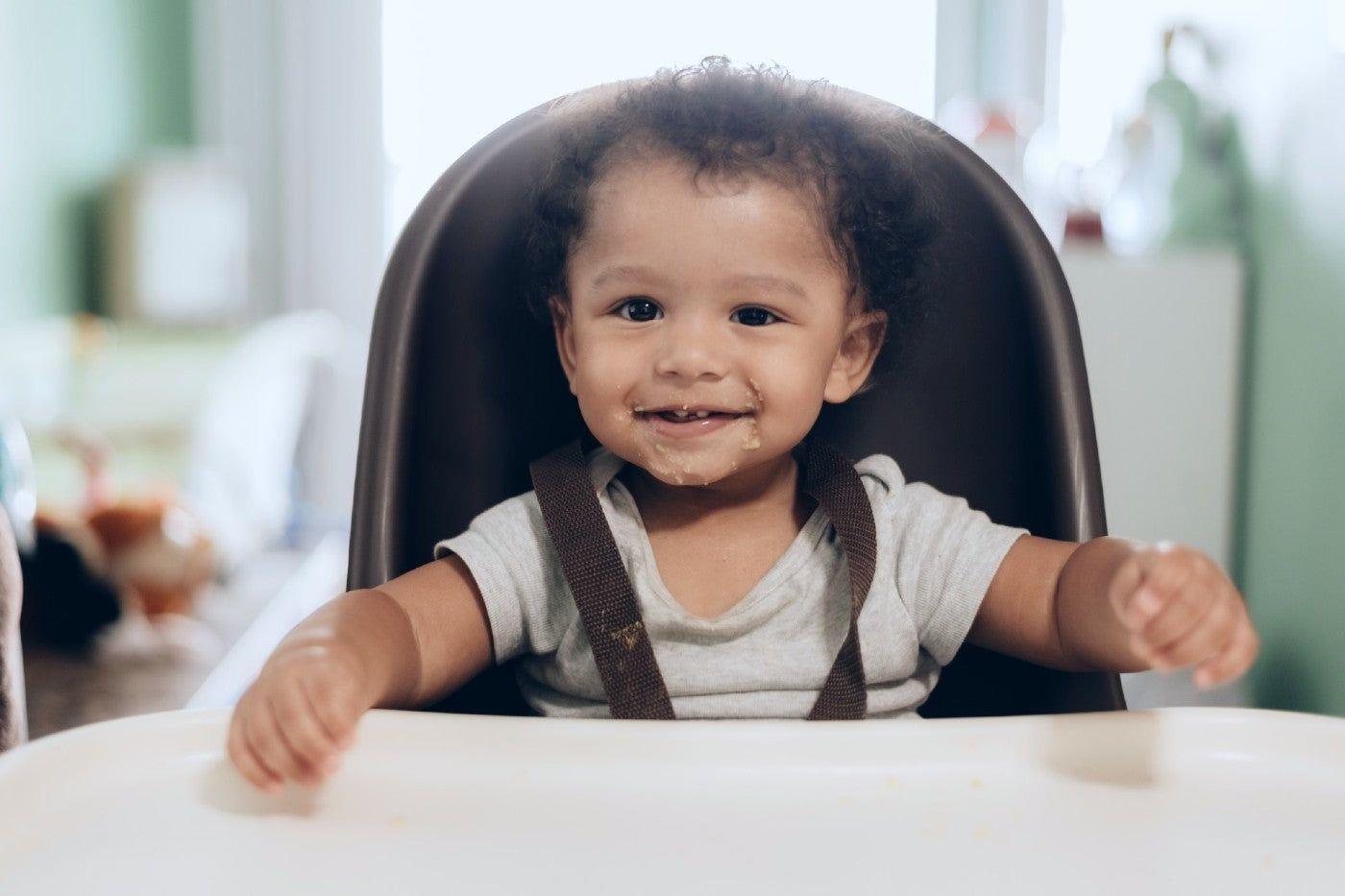BABY
When Do Babies Eat Solid Food?
When it comes to babies, there is no shortage of opinions on when, how, and what kinds of foods to feed them.

Written by
Dr. Harvey Karp

SHARE THIS ARTICLE
PARENT PICKS
Bestsellers
BABY

Written by
Dr. Harvey Karp

SHARE THIS ARTICLE
Bestsellers
When it comes to babies, there is no shortage of opinions on when, how, and what kinds of foods to feed them. For example, in the 1960s, Dr. Walter Sackett famously told parents that babies should be eating eggs and bacon as young as 10 days old! In the 1980s, paediatricians told parents to avoid eggs until 1 year of age…for fear of triggering allergies. Then, we discovered that earlier exposure actually led to fewer allergies, not more! Now we are back to recommending starting eggs at around 6 months.
So, if you are confused about starting solids, you are not alone. But here are a few common-sense ideas about introducing solids that will hopefully be a useful guide…
Even when you start solids, breastfeeding offers great benefits for you and your baby. (The longer you breastfeed, the more you lower your risk of breast cancer!) Ideally, you might try to exclusively breastfeed for the first 6 months and continue it as part of your child’s diet until about the 2nd birthday. Of course, this is not possible for all families.
Babies typically begin eating solids around 6 months.
After months of just giving milk (breast or formula) it makes sense to think that a baby’s body needs some solid food to give a more balanced nutrition. But, even at 6 months, milk is 95% of an infant’s nutrition, by 9 months it is about 75% and it only reaches 50% at the first birthday.
In truth, most early foods are what super models eat to keep from gaining weight! Milk has protein, fats, perfectly designed carbohydrates and so much more…and rice cereal is, well, just a clump of starch. Now, this does not mean that babies’ nutritional needs are completely met by the special milk we provide. Babies—and adults—benefit from some extra vitamin D, and by 6 months babies (especially breastfed babies) are usually running low on iron (so important for your baby’s brain, blood, immunity, etc).
Breastmilk does not contain much iron, but it is very well absorbed…until you start solids. Most food interferes with the absorption of iron from breastmilk, but vitamin C enhances iron absorption. So, it is important to add foods that have extra vitamin C to iron-rich foods (more about this below).
From there, your mini gourmand can expand their palate to most food groups, including veggies, fruits, meat, dairy products (such as yogurt and cheese), eggs, fish, and more.
For decades, parents have been told to offer infant cereal fortified with iron. The amount of iron in these products is small and cereals are mostly just starch. Plus, brown rice has been shown to have increased levels of arsenic, a carcinogenic chemical. So, better to stick with barley, millet, farro, or amaranth.
It is a good idea to introduce just one food every two to three days. That will help you figure out the cause of any reactions (diarrhea, constipation, rash).
Reduce the risk of choking by only giving small pieces of food, avoiding hard bits, and only allowing eating while sitting. And now is a good time to refresh your memory about how to rescue a child that is choking.
When you can, offer organic food. Why give your baby foods that were sprayed with chemicals strong enough to kill bugs? For lots more info about the safest food – with the least amount of pesticide – check out the Environmental Working Group’s 'dirty dozen and clean 15'.
Note: When a fully breastfed baby starts food, be prepared for their poop smell to switch from sort of sweet…to something more like a sewer!
0 to 6 months
6 to 8 months (if the baby is showing signs of readiness):
9 to 12 months
As exciting as it might be to introduce your little foodie to all of your faves, there are some foods that are not safe for Baby’s plate…no matter how ready your kiddo seems. Those foods include:
Before you start filling your baby’s high-chair tray with solids, it important that your baby shows you that they are up for the challenge. While they may not have too many questions for the chef about what’s on the menu, they will be able to do a few key things that demonstrate their bodies are able to handle solids.
Signs of readiness include:
Disclaimer: The information on our site is NOT medical advice for any specific person or condition. It is only meant as general information. If you have any medical questions and concerns about your child or yourself, please contact your health provider. Breastmilk is the best source of nutrition for babies. It is important that, in preparation for and during breastfeeding, mothers eat a healthy, balanced diet. Combined breast- and bottle-feeding in the first weeks of life may reduce the supply of a mother's breastmilk and reversing the decision not to breastfeed is difficult. If you do decide to use infant formula, you should follow instructions carefully.